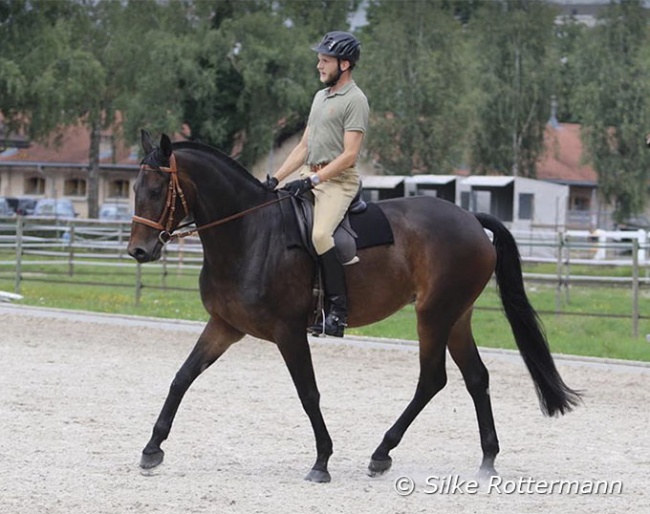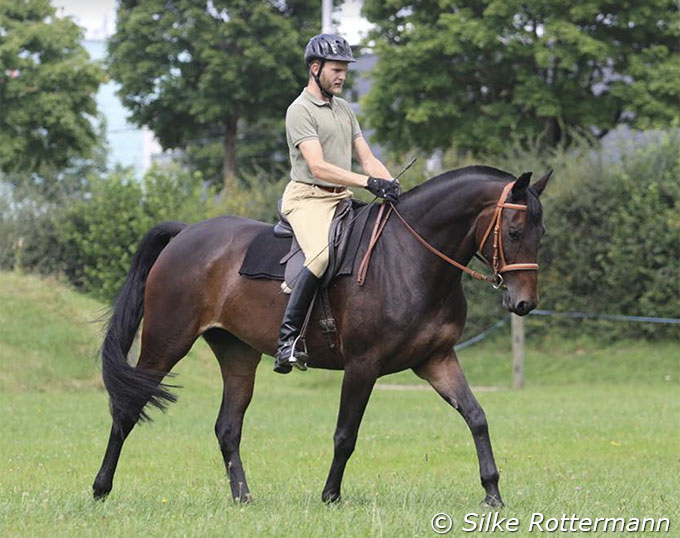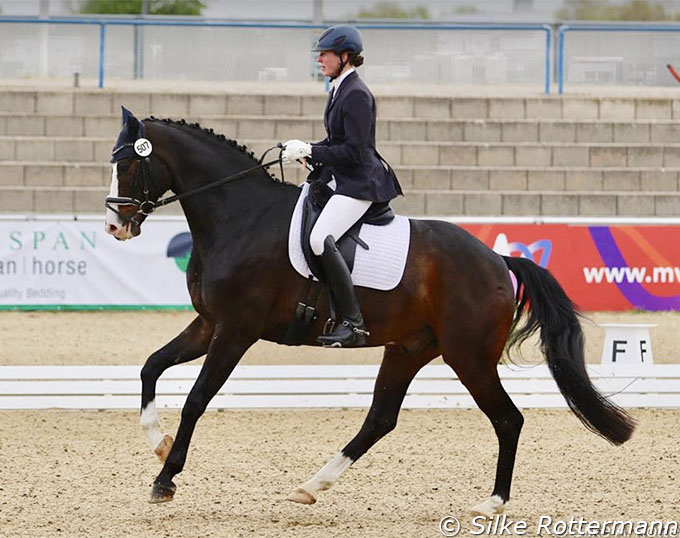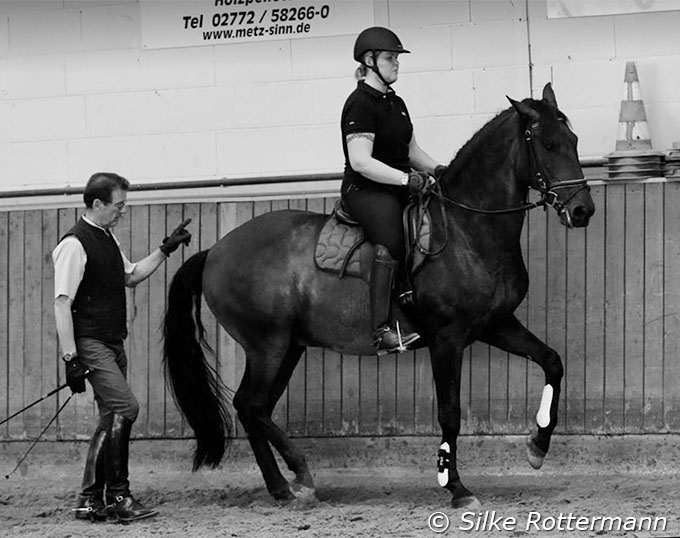
Correct collection is a based on correct training and well-prepared exercises which result in good, balanced movement with a calm and active horse.
The idea of collection is important to keep in mind already when training a young horse, as the foundation of good collection is laid there. The young horse needs to learn how to move happily forward in the best possible balance, and learn to understand the language of the rider’s aids. If everything goes well and the horse is trained well from the beginning respecting the idea of classical horsmanship, the principles of good movement and balance remain the same even when the level of difficulty gets higher through the levels. An active and balanced horse thinks forward in a good way – reaching towards the bit with a soft contact and giving the rider the feeling of moving in front of the leg, symmetrically and slightly uphill.
When we introduce the horse to the idea of collection, we should use exercises that help the horse to find its balance and a proper posture. This makes the steps towards collection easier and collection becomes a tool, not a trick or one of those far away goals that are hard to reach. Every half halt, every transition, every turn, and lateral exercise prepare the horse towards better collection. From the early stages it must be clear that the aids are as small as possible, but clear. At the same time we need the horse to understand and really listen to the rider. We can´t allow the horse to push against the hand or the rider pulls at the reins and thinks he can fix that later. This would quickly ruin balance as well as posture.

travels easily through the body
Balance is Both, Mental and Physical

clear 3-beat rhythm with the nose in front of the vertical
As we train, we also build a mindset that defines how it feels to move. This has a huge impact on the quality of the movement and the rideability of the horse. The confident and positive mindset makes a real difference when exercises become more difficult. Because when the horse is trained well and is therefore confident, it seems that it is enjoying the work, being excited and happy to do whatever is asked. In the best case it feels and looks like there is joy in the movement and both horse and rider seem to read each others minds, instead of the horse doing everything like a robot that just obeys. The competition arena or any other new place could be a spooky place for horses that are ridden to be explosive, but not for horses who have that positive mindset I was just talking about.
The horse needs to move happily forward with a soft and light contact. This is only possible if the horse is calm in his mind and trusts his rider. For that, we need a rider that is calm in her own head. Only when the mental state is balanced, positive and calm, the body is able to move in good physical balance. That makes sensitive aids, and invisible nuances of communication possible. Here we also get access to proprioception and that helps developing the horse’s movement with a high level of precision.

curved lines and lateral exercises. The relaxation of the
poll helps to find good balance and hindleg activity
Mental balance is as important as the physical balance. We can´t force a frame, put a horse in a position and add a lot of movement without consequences in both mental and physical balance. Such riding creates a horse that is worried and stiff, ready to react and possibly escape. Alternatively it would become very slow to the riders aids. Tension makes smaller aids difficult or impossible to understand. Mental balance is extremely important, and for that the horse needs to be free to move forward in a good posture. Bad postures, rough aids or fear raise the sympathetic nervous system activity, that prepares the horse towards flight response, which compromises the welfare of the horse if this happens often. It is also then results to use stronger aids to control a horse in such mode.
Dressage Rules Define the Frame
In correct collection the horse remains slightly in front of the vertical or is approaching the vertical. The vertical is a clear definition, and this fine line is there for the good of the horse. There is a very important reason for remaining in front of the vertical, both in the show-ring and in the daily training: The horse needs to breathe.

becomes slower and the energy level becomes higher. The front end
is slightly lifted, front legs remain vertical and the hind end lowers.l
Forwards and upwards movement becomes more challenging with the horse behind the vertical, and it leads to a variety of compensations. Some horses try to become very short in the frame when collecting, but this is not correct, and the rider needs to help the horse to relax and lengthen and open the frame. We need to teach the horse to remain open in the throat latch, especially when collecting because it´s hard work and it shows if the horse is trained correctly. In collection the horse becomes higher in the frame, and at this point the conformation and muscle tone really matter. When we collect the horse in front of the vertical, the horse can also use his vision normally, which is important for the balance. To remain slightly in front of the vertical or in high level collection becoming close to the vertical is repeated in the international dressage rules very clearly and this rule really should be respected also in the daily training.
Text by Niina Kirjorinne - Photos © Silke Rottermann
Related Links
Functionality in Equitation: Skin Damage from Leg Aids
Functionality in Equitation: The Forward Thinking Hand
Functionality in Equitation: Balance, the Key in Equitation
Functionality in Equitation: Aim for Good Movement
Functionality in Equitation: Fascia and Movement
Functionality in Equitation: Fascia Treament - Surface Has a Deep Effect
Meet Niina Kirjorinne, Classical Dressage Rider and Physiotherapist
Effect of Noseband Positioning to Fascial and Neural Dynamics of the Head